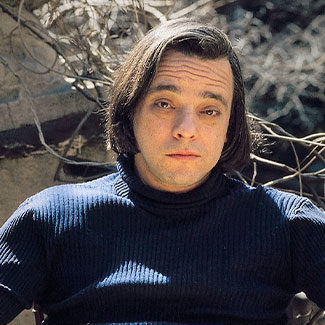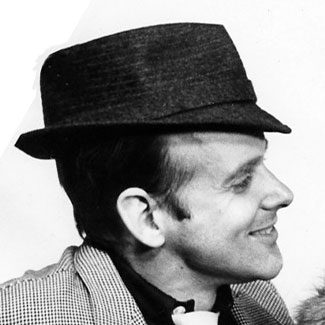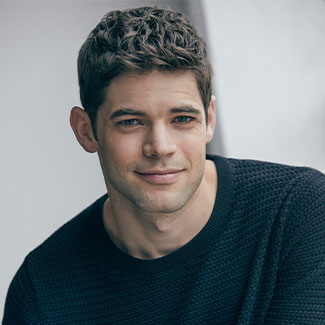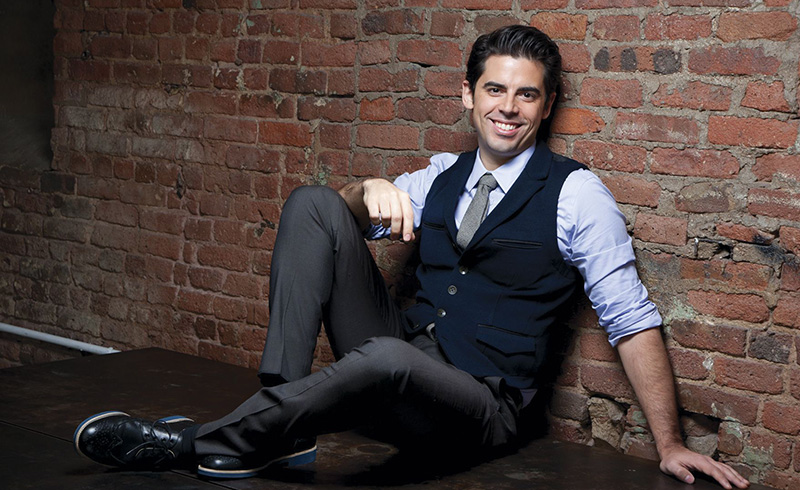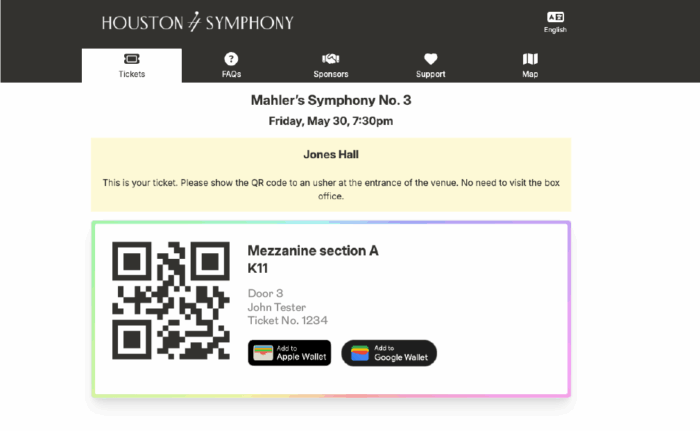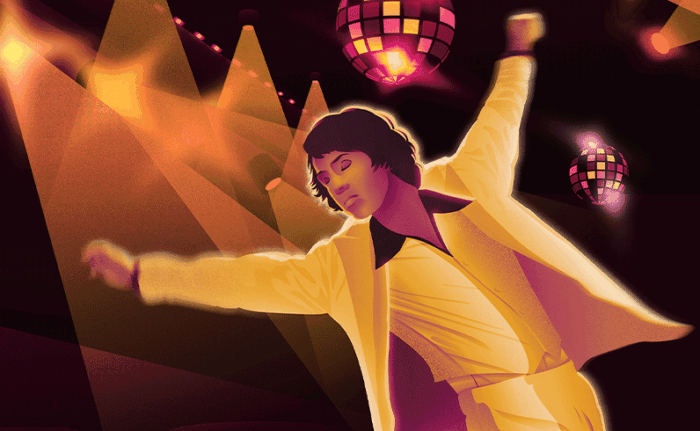If you haven't already, read the first part of the blog series!
Continuing our decade-by-decade journey of 100 years of Broadway history, we begin with the 1960s to examine how each epoch of the last century put its distinct mark on the musicals you know and love today! Don’t forget to check out the first of this two-part blog series here. After reading, be sure to secure your seats now for the Houston Symphony’s tributes to the perennial favorites in The Best of Broadway with Jeremy Jordan, Let’s Misbehave: The Songs of Cole Porter, and Broadways Goes to Hollywood, this February, March, and May at Jones Hall.
1960s
In many contexts, the 1960s can be defined by two distinct styles. The first half of the decade was more closely akin to the conventional Americana periods of the 1950s in respect to society, fashion, familial roles, and entertainment whereas the latter half of the decade saw a dramatic shift in the pendulum as the young Baby Boomers began reaching adulthood and embraced a more individualistic style of expression, not afraid to challenge the status quo norms of their parents and grandparents. The same trend can also be seen on Broadway stages. For example, more classical musicals like Camelot swept the 1961 Tony Awards while just a few years later in 1968 the novel rock musical was introduced with the premiere of Hair, which intentionally challenged social norms with lyrics that urged straying from consumerism that had come to indemnify American values over the past couple decades and instead embraced themes of racial unity, sexual liberation, and respect for nature.
With television becoming a fixture in 90% of American homes by the end of the 1960s, Pop Culture benefited in reaching a huge network of audiences. Eager to capitalize on the financial success of the de facto American superhero first introduced in a 1938 comic strip, the iconic protagonist finally made his way to Broadway in 1966 in It’s a Bird… It’s a Plane… It’s Superman, with high hopes of dominating that Season’s box office sales. Unfortunately, audiences were not as keen on this concept as producers predicted, and with record-breaking production costs of $600,000, the show became Broadway’s then-biggest flop.
As a decade of musical experimentation, both in styles and staging, the 1960s would produced many legends of the stage, including Angela Lansbury, Julie Andrews, and Barbara Streisand and saw many early career successes of the renowned composer and lyricist Stephen Sondheim.
What to listen for: Although featured in the 1978 film as opposed to the 1966 musical, the orchestra pays homage to the fabled character by performing John William’s well-known Superman theme, February 24–26.
As a decade of musical experimentation, both in styles and staging, the 1960s would produced many legends of the stage, including Angela Lansbury, Julie Andrews, and Barbara Streisand and saw many early career successes of the renowned composer and lyricist Stephen Sondheim.
What to listen for: Although featured in the 1978 film as opposed to the 1966 musical, the orchestra pays homage to the fabled character by performing John William’s well known Superman theme, February 24–26.
1970s
The societal evolution witnessed by the previous decade allowed for more adult themes to take center stage in musical plots. For example, 1970’s Company, which would be nominated for a record-breaking 14 Tony’s that year and winning six of them, covers such topics as sacrifice, dating, and even divorce, which was still widely considered a taboo at the time. In terms of genre, rock musicals would continue to be produced and frequented by excited patrons.
Throughout the decade, experimentations in staging were also undertaken, stripping away the elaborate sets and over-the-top costumes that were popularized during the Golden Era of the 1950s. The debut of Chicago in 1975 set the show in the jazz-hungry and seedy underground world of murderous 1920s Chicago and was styled as a series of vaudeville-type vignettes, paying homage to the popular form of entertainment from that era. The set was minimal and costumes oftentimes even less.
Chicago, along with many other popular shows of the 1970s, featured the magnificent choreography of Bob Fosse, who was a contracted MGM dancer during the 1950s. It was in this decade that he really cemented his genre of jazz-inspired dance by mixing in his now trademarked “Fosse Amoeba” of turned-in knees, sidelong shuffles, finger snaps, and, of course, jazz hands. These were performed in contrasting styles of extremely sharp and quick movements to slow and sensual kinetics. This innovation of dance has become famous with his name and is still featured in many productions even today.
What to listen for: Jeremy Jordan brings “All that Jazz” and more to the Jones Hall stage with selections from Chicago, the longest-continually running production on Broadway.
1980s
The 1980s bore many musicals that would quickly cement themselves in mainstream culture and become a household name spanning generations and countries. Originating in England’s West End before immigrating to Broadway, a new genre dubbed the “Pop Opera” was championed by composers like Andrew Lloyd Weber, Claude-Michel Schönberg, John Cameron, and Alan Menken. This style blended lyrical elements of opera with a lush, full score with mainstream pop vocals and occasionally even paired electric instruments with traditional orchestral sections.
Much focus was also given to producing innovative, larger-than-life sets that intermingled with the action of the show. From plummeting crystal chandelier drops, to thunderous full-scaled helicopters illuminating a darkened field, and gargantuan barricades of toppled tables and wardrobes fortifying the back alleys of revolution-era Paris, the personified settings of 1980s musicals were just as much a part of the story as the songs and characters themselves.
Off the stage, it’s also interesting to note that it was during this decade that promotional efforts to boost ticket sales to these big-budget shows helped to secure their lasting legacy in Western pop culture. Trademarked memorabilia became instantly recognizable to even the most tepid musical consumer. Whether a pair of feline eyes glinting with intrigue, a white masquerade domino mask accompanying a single red rose, or a forlorn looking female child overlain with the colors of the French flag, the commercial and cultural success of many 1980s musicals was achieved in no small part by teams of savvy marketers.
What to listen for: Jeremy Jordan transports you from the barricades of Nineteenth century revolution with numbers from Les Misérables to the battlefields of 1970s Vietnam in Miss Saigon.
1990s
The final decade of the Twentieth century gave rise to the screen-to-stage success of many beloved Disney-Renaissance era productions. Thus, comes the “Corporate Musical” as shows like these would be nicknamed. While these shows had healthy production budgets and could easily be scaled for international tours in multiple languages, some argue that the spark of creativity was at times depressed by businesslike specters in grey suits who retained final creative control in an effort to remain consistent with the brand. Nevertheless, there is no denying the mass appeal of say, Disney’s Hunchback of Notre Dame, introduced the Broadway musical to a whole new generation of theatre patrons in a decade that was beginning to see attendance slip precariously.
Just as the previous decade introduced mainstream pop music into the score, the 1990s would do similar mashups as grunge rock dominated stereos. Instead of focusing heavily on historic settings, however, the 1990s rock musical strove to highlight contemporary issues plaguing society, such as the AIDS epidemic, poverty, and racial inequality in a quickly modernizing global world.
Finally, the decade came full circle by ending with a highly successful revival of Cole Porter’s 1948 production of Kiss Me, Kate. Set around the same time, this show is a musical-within-a-musical and is loosely based on Shakespeare’s Taming of the Shrew. The revival’s success underscored the perplexity of Broadway producers at the end of the century as audiences seemed to thoroughly enjoy the subdued wit and melodic jokes of Porter’s then-dimmed gold standard of writing at a time when humor sought to appeal to the masses with more overt lyrics and tones. Where the musical would go in the dawning of the Twenty-first century was anyone’s guess…
What to listen for: High in the belltowers of Paris’s Notre Dame Cathedral lives a Hunchback, given voice by Jeremy Jordan. Plus, the suave Tony DeSare shows just how timeless is Cole Porter’s jazz-infused virtuosity.
2000s
Early into the new millennium, comedies rang supreme at theater box offices. Between 2000–2005, a comedy won five out of six Tony Awards for Best Musical. Additionally, it was this decade that also saw the rise of the Jukebox musical, which pulls songs by other artists to pay tribute to or create a cohesive narrative reflective of a particular vocalist or period in history. While it is difficult to think of the 2000s without the consequences of the World Trade Center attack and War on Terror, it seemed that while many feared the decline and shuttering of Broadway theaters during the 1990s, their welcoming accommodations as a venue to create important dialogues was needed more than even for a nation beseeched for comfort during such a stressing period.
While laughter was certainly a much needed outlet during these years, post-911 Broadway also saw a response in the number of shows produced on more serious subject matters. The Last Five Years, which was released in 2001, show the main characters reflecting in reverse-chronologic timelines about the respective beginning and ending of their marriage to one another. As the two spouses are also of different religions—Jewish and Irish-Catholic—Broadway theatre continued its latter trend of broadcasting highly topical issues of the day. The Last Five Years would eventually be made into a musical film in 2014 starring none other than Jeremy Jordan as the male lead.
What to listen for: Straight from the silver screen, Jeremy Jordan sings one of his own numbers from The Last Five Years.
2010s
The most recent complete decade of Broadway history featured a variety of blockbuster shows pulled from a multitude of styles and genres. This showcased how diverse fans of musical theatre have become thanks to worldwide exposure earned on social media. Disney continued to capture attention with the 2011 premiere of Newsies: The Musical, which is based on a real-life 1899 strike of Newsboys. Jeremy Jordan brought to life main character Jack Kelly who holds a meeting with his fellow newsboy in the Medda Larkin Theatre—which is based on the real-life meeting held at the New Irving Theatre—showing how important playhouses have been as public spaces for centuries.
More focus started to be paid to diversity and highlighting underrepresented voices during this decade too. The 2015 premiere of Waitress would ultimately be nominated for a Grammy Award and was also widely lauded for being the first show with an all-female production team. While it tells a familiar story of a resilient woman seeking to elevate herself from an abusive marriage, it broke archaic traditions thanks in part to its history-defining and -defying team.
Later in the decade nostalgia for the over-the-top song and dance routines of the Golden Age returned with the Hollywood smash hit La La Land, *nearly* grabbing an Oscar for Best Film in 2017. Although differing from a bona fide 1950s musical in that the lead couple don’t end happily ever after together, but rather realize their incompatibility and find individual happiness by pursuing respective career success. Still, its hard to not reminiscence about the glorious costumes, sweetening melodies, and extravagant dance sequences in lush colors that were popularized by the MGM musical of yesterday. While this picture hasn’t found its way to a Broadway stage yet, it’s only a matter of time before the sisterhood of Hollywood and Broadway play in tandem once again.
What to listen for: Jeremy Jordan shines with homages to his role in Newsies and covers a piece from Waitress. Plus, La La Land is revisited by the talented Nikki Renée Daniels and Hugh Panaro this May.

Remember, now—February 17, save when you bundle together two or three Bank of America Broadway-themed POPS concerts. We hope you enjoyed our century-spanning journey through the evolution of Broadway musicals and join us for what’s in store this February, March, and May at the Houston Symphony! —Mark Bailes

